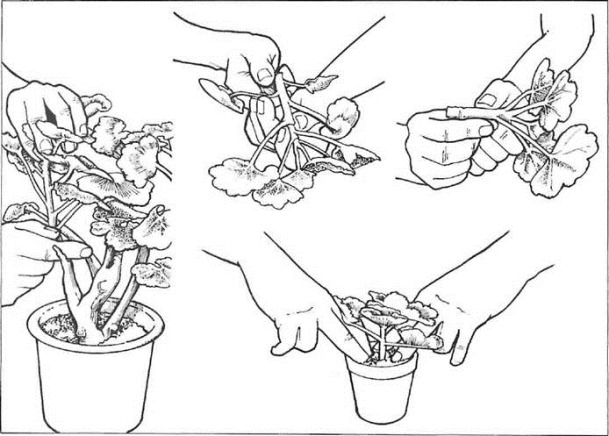





The remainder of the early-flowering chrysanthemums can be disbudded and the late flowering varieties can be treated towards the end of late summer for flowering late in mid-autumn and onwards.
Continue to cut off dead flowers from annuals, bedding plants and pelargoniums to keep the displays of these plants as immaculate and brilliant as possible. Deadheading herbaceous perennials is not quite so important but you may be doing this in advance, in any case, by cutting the flowers for the house.
Continue to liquid-feed all chrysanthemums in pots, sweet-peas if they are being so treated and greenhouse plants, as in mid-summer. The lawn that is growing on light soil can have one, half-strength feed early in late summer, but no later, otherwise it may grow too lush too late in the year and be ‘soft’ when winter comes.
Newly planted freesia corms should be staked now to support their long floppy leaves and stems later. Freesias growing from seed will nearly have finished their leaf growth, so will not need further training of foliage through the network of strings. Provided they have not been short of water during the summer, have been in a lightly shaded place and have not been subjected to too much warmth, they will begin to produce flowering stems in early autumn.
Most hippeastrums will come to the end of their growing season now and can be left completely without water; put the pots on their sides underneath the greenhouse staging. However, because modern hippeastrums are hybrids and have an evergreen ancestor in their family tree, those few in whom this influence is strong will not die down but will keep their leaves but, they should not be fed and should be kept just moist, so their metabolism slows down.
You can take pelargonium cuttings at any time in late summer, the regals early and the zonals late. The regals have a much floppier habit of growth and fewer, but larger, trumpet-like flowers. The zonals have a dark band or zone on the leaves and heads of tightly clustered, small flowers; they are popularly known as ‘geraniums’.

A shoot which will provide a good cutting will not have flowered or even have a flower-bud on it; the joints will be short, that is, the length of stem between the points where the leaves are attached will be 5 or 7.5cm (2 or 3in) long, rather than 10 or 12.5cm (4 or 5in). Lastly, the stem will not have started to harden but neither will it be soft and sappy. You can also make cuttings of ivy-leaved and scented-leaved kinds now, though in fact they root so easily that any time in summer is suitable.
Make the cuttings about 11cm (4-1/2in) long, cutting cleanly just below a leaf-joint and removing the lowest leaves. Put three or four round the edge of a 9cm (3-1/2in) pot of sandy compost, cover with a clear plastic bag and put them in a cold frame outdoors, or in a shaded propagator, without the plastic bag, in the greenhouse. Watch their water needs.
Mowing, watering, weeding and compost-heap-making continue to be necessary, but on a smaller scale than in mid-summer. Watering outdoors may not be necessary at all, in which case, weeding and mowing will be correspondingly much more demanding.
Capsids, leafminer, greenfly and caterpillars should be much less troublesome, though a last, precautionary spray against capsid and leafminer on chrysanthemum and dahlia and against leafminer on cinerarias is advisable. Continue to be on guard against whitefly, red spider mite and mealy bug under glass.
Earwigs will be the main problem, especially on dahlias, and there is still nothing much better than flowerpots filled with straw or paper and put upside down on top of the supporting stakes. Earwigs feed at night and hide during the day and such pots will be very convenient for them; check the traps daily and destroy any earwigs found.
Chemical sprays can be used but as the flowers have to be treated because they are the main targets, the sprays can do more damage than the insects.
A fungus disease that can spread rapidly during late summer is mildew; it infects many plants including Michaelmas daisies and chrysanthemums. There are varieties of both which are somewhat resistant to the disease. Mildew produces powdery white patches on leaves, stems and flower-buds sufficiently severely to kill leaves, malform flowers and stop the extension growth of stems. It appears during dry, warm weather and plants whose roots are short of water suffer heavy infections. Stuffy, badly ventilated conditions encourage its spread. Picking off affected leaves as soon as seen and spraying the remainder with a fungicide will help; alternatively, use a preventive systemic in advance.
Copyright © www.100flowers.win Botanic Garden All Rights Reserved